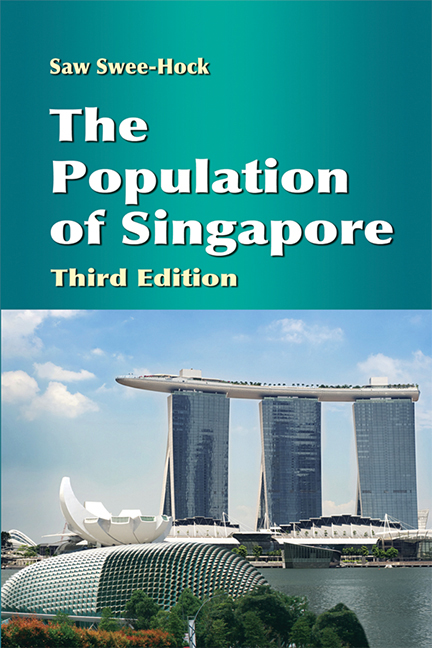Book contents
- Frontmatter
- Contents
- List of Tables
- List of Figures
- Preface
- Preface to Second Edition
- Preface to Third Edition
- 1 Background
- 2 Population Growth and Distribution
- 3 Changing Population Structure
- 4 Migration
- 5 Mortality Trends and Differentials
- 6 Marriage Trends and Patterns
- 7 Divorce Trends and Patterns
- 8 Fertility Trends and Differentials
- 9 Family Planning, Abortion and Sterilisation
- 10 Fertility Policies and Programmes
- 11 Immigration Policies and Programmes
- 12 Labour Force
- 13 Future Population Trends
- Appendix
- Bibliography
- Index
Preface
Published online by Cambridge University Press: 21 October 2015
- Frontmatter
- Contents
- List of Tables
- List of Figures
- Preface
- Preface to Second Edition
- Preface to Third Edition
- 1 Background
- 2 Population Growth and Distribution
- 3 Changing Population Structure
- 4 Migration
- 5 Mortality Trends and Differentials
- 6 Marriage Trends and Patterns
- 7 Divorce Trends and Patterns
- 8 Fertility Trends and Differentials
- 9 Family Planning, Abortion and Sterilisation
- 10 Fertility Policies and Programmes
- 11 Immigration Policies and Programmes
- 12 Labour Force
- 13 Future Population Trends
- Appendix
- Bibliography
- Index
Summary
The city-state of Singapore, with a small cosmopolitan population, is well known for its accomplishments in many areas of social and economic development brought about by a strong and stable government. Among the more significant characteristics are the clean and crime-free environment, the remarkable public housing programme, the air transport system centred on a first-rate airport and national airline, the world-class seaport, and the high standard of living. The per capita income was estimated to reach US$32,810 in 1997, higher than that recorded for Australia, Hong Kong, the United States, the United Kingdom, Germany, and many European countries. In the field of demography, the most prominent achievements are the effective population control programme and the rapid decline in fertility to replacement level in 1975. These two characteristics, together with other major features of the population, are discussed in considerable detail in this book.
It has always been my fervent desire to incorporate my research findings on the different aspects of Singapore's demographics into a single cohesive work. Not surprisingly, this ambitious project has taken a long time to realize. Pressure of work prior to my retirement from academia did not permit me to make any sustained effort to prepare the manuscript, and intensive writing could only be realized during my study leave spent in the Department of Statistics at the University of Hong Kong in 1991, and in Wolfson College, University of Cambridge, in the following year. Thereafter, progress on the manuscript was delayed further by the late release of the results of the 1990 Population Census. In giving the finishing touches to the manuscript in the late nineties, I took the opportunity to include whatever data that were pertinent and available for the years up to 1997 to supplement the census data. The final product incorporated in this book has been carefully designed to meet its overall objective of presenting a comprehensive and up-to-date account of population trends and patterns in Singapore.
- Type
- Chapter
- Information
- The Population of Singapore , pp. xvii - xviiiPublisher: ISEAS–Yusof Ishak InstitutePrint publication year: 2012

